Dan Poblocki is the author of an ossuary full of horror books written for kids, including The Nightmarys, The Ghost of Graylock, and his most recent, The Book of Bad Things. He joins Awake at Midnight under gathering clouds that mark the impending release of The House on Stone’s Throw Island.
Awake at Midnight:
Names like New Starkham and Dexter August in The Stone Child hint at a strong Lovecraftian influence in your writing. How do you avoid falling into the standard tropes like creeping tentacles and The Necronomicon and still bring a mythos flavor to a story?
Dan Poblocki:
Lovecraft has definitely been an influence in my writing. (For true chills, nothing beats The Case of Charles Dexter Ward.) What I love so much about his stories is that, most often, the most horrifying scenes are the ones in which he allows you to imagine the horror that is lurking in the darkness without describing it outright. I connect with this aspect of his writing more so than the larger mythos that people associate with him– the tentacles and Necronomicon and such.
I also appreciate that the different towns he writes about each have their own kind of folklore/ monsters. I thought it would be fun to use that construct, especially in The Stone Child and The Nightmarys, which I sort of see as companion books. Gatesweed’s monsters in The Stone Child have a different flavor than the evil that lurks in The Nightmarys’ New Starkham, yet I wanted each place to feel like it had its own specific history that would catalyze their respective troubles.
How do you go about designing the puzzles in your stories, like the words in Hesselius’ lighthouse floor in The Nightmarys or Rebecca’s poem in The Ghost of Graylock, (and of course, The Mysterious Four series)? What do you do when a puzzle/solution doesn’t fit into a story the way you want it to?
The story is what demands the design of the puzzle. I really don’t even remember what inspired the puzzle solutions in The Nightmarys and Graylock. (The Mysterious Four is another thing entirely… Those books were incredibly difficult to write! Puzzles upon puzzles and clues upon clues…) Ultimately, the characters must meet obstacles while barreling toward their goal– whether that obstacle is an enemy, a personal problem, or a secret code that needs to be deciphered, I strive to never make it easy for them.
I keep a notebook that I fill with ideas of objects and numbers and images that might somehow connect.
I often think of the story’s ending first, and then work backwards, planting clues throughout the book for the characters to discover along the way and then use to bash through whatever obstacle pops up. If a puzzle/solution isn’t working for the story, or if I find it’s making things too complicated, I’ll simply cut it. I try not to fall in love with any particular idea or image. I’ve cut out entire characters and plotlines when they’ve become too troublesome.
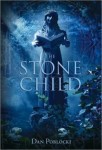 |
 |
 |
Authors and editors often say it’s difficult to find a balance in books for the middle-school audience where a story is easy to read, but not condescending. Is there is a similar level of “scariness” you try to maintain for your readers, or do you strive to write the most frightening story you can?
I’ve had the pleasure of working with some editors who don’t worry about “scariness” level, so I don’t really worry about condescending to my readers. I feel like my writing voice is pitched right around that middle-grade area. I write what I want to read, or what I remember loving when I was in fifth, sixth, seventh, and eighth grade. That age is so unique — you literally are in the “middle” — not quite ready to leave childhood behind entirely, but you’re also kind of unprepared for what adult life is about to throw at you. Being in this middle place can be scary.
I remember fretting near the end of my sixth grade year that seventh grade was going to be SO much harder. My fear of seventh grade got so bad I had trouble sleeping. Emotions are already so intense at the age of 12, I think it’s not such a large leap to add something supernatural or spooky into the mix of everyday life. I think that middle-schoolers can relate to scary experiences, because they already live in that liminal space.
That being said, I do strive to write the most frightening story I can. In fact, my editors have sometimes suggested I make the books more frightening. And once I was given that permission, I was like: GREAT! LET’S DO THIS. HAHAHAHA!!!
I’ve realized that the line I can’t really cross has to do with graphic violence. It’s a fine line, and difficult to discern, because bad things do happen to the characters in my books (sometimes even very bad things), but I try to write sensitively about those things. Sometimes this restriction (in terms of what the age-group can handle) helps– less can be more when it comes to the horror genre. Like I mentioned regarding Lovecraft, what the reader comes up with when a writer leaves out a vivid or bloody description can be a much more terrifying story experience.
How do you outline? How many scary scenes does it take to build a strong ambiance of fear?
It depends on the book. Sometimes I’ll just start writing and see where it goes. Most often, I’ll have a sense of the characters and place, as well as an idea of where the story will end up. Then when I’m about fifty or so pages in, I’ll start to lay out a more specific outline. Sometimes, a single scene will call for play-by-play choreographed movement around a place. (I had to do that for the action-packed scene at the end of Gabriel Ashe, when Gabriel rushes into the burning barn, literally outlining every step he took.)
As for how many scenes does it take to create a certain ambiance, that’s the sort of thing I get a sense of once I have a first draft written. I can read back through the manuscript (usually a giant mess) and take notes and move scenes around, or make cuts, deletions, or additions based on how things are flowing.
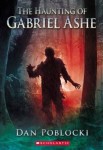 |
 |
 |
Your readers have heard of the town of Heaverhill in more than one book, and Nathaniel Olmstead from The Stone Child comes up again in The Haunting of Gabriel Ashe; will future books continue to draw on and expand the same shared world?
I think so. I never plan on it, but it just sort of happens. As a reader, I think it’s fun when I discover a link between a certain author’s separate works. Stephen King does this a lot. I’ve also noticed an obscure connection between M.T. Anderson’s science-fiction novel, Feed, and his historical epic, The Astonishing Life of Octavian Nothing, which made me feel really smart! David Mitchell is also a magician in terms of intertwining story.
An author’s mind is its own contained world, so why not have all the stories that live there connect, even if only in minuscule ways? Whenever a reader points out that they’ve noticed my “easter-eggs,” I give them a little wink for paying such close attention.
Many of your stories deal with abandoned places. What kind of “urban exploration” have you done for inspiration?
Most of my exploration has occurred only online. I’ve watched way too many YouTube videos of people crawling through the ruins of abandoned houses, mansions, hospitals, and prisons. Living in New York City has made it hard to go do it myself. Abandoned sites in and around New York can be truly dangerous. And since I don’t own a car, it’s hard for me to venture out on my own.
But I’d be totally up for it, if anyone can suggest a safe, legal way to do it!
Was Graylock based on a real hospital in upstate New York? How did you discover it? Can you tell us more about it?
Graylock is an amalgam of a few places. There actually was an abandoned psychiatric hospital north of where I grew up in New Jersey, called Greystone, which I believe is in the process of being destroyed to make room for new housing. (Boo!) I never went inside, but my family drove us through the grounds when I was a kid. It freaked me out, imagining that much of the old furniture and equipment was just sitting inside, rotting. People told lots of stories about it, some of which made their way into my book.
There is another (functioning) psychiatric hospital up in Massachusetts, not far from where my family now lives, that sits on a lake. That lake was an aspect I decided would work well for my little story.
What was the scariest experience you recall having as a child?
As a kid who spooked really easily, this is a very hard question to answer. There are SO many! My imagination was always filling in the gaps of things I didn’t understand – and it filled them with horrors. Thankfully, I lived a very pleasant childhood. Nothing very traumatic ever happened to me. But that didn’t stop me from freaking out occasionally.
The most terrified I ever remember being was on a summer night when I was lying in bed, the window open beside me, the electric fan cooling me off. It was a ranch-style house, so my room was on the ground floor. From just outside the window, in the thick evergreen bushes, I heard a voice call out. It sounded like a very young child. “Mommy?” it said. I froze. What the heck was a little kid doing outside in the middle of the night? The voice called out again, this time louder. “MOMMY?” I heard the bushes rustling. I sat up, unable to catch my breath. I was just about to call out to my own parents, when the voice called a third time, this time rising at the end into what sounded like a howl of pain and terror. “MOMMMMMYYYYYY???”
At this point, I started screaming too. My parents came running. I told them what I’d heard, certain that there was a toddler or a baby outside who was lost or trying to crawl away from something truly awful. My mom and dad peeked outside and discovered that it was only a couple of neighborhood cats who were getting rowdy.
I was shocked. I had no idea that animals could sound so human. I also had no idea that my imagination could go to such a dark place. It was a real learning experience.
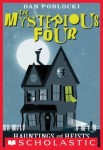 |
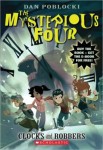 |
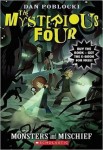 |
Who do you feel are the most exciting new mid-grade/young adult horror authors?
Jonathan Auxier has written the most frightening middle-grade book I’ve read recently: The Night Gardener. Truly imaginative with the most frightening villain maybe in all of kid’s literature. Aaron Starmer’s The Riverman trilogy has some horrific and exciting elements for middle-grade readers (or adults!) looking for strange fantasy set in the 1980s suburbia. Andrew Harwell’s The Spider Ring is a creepy story full of heart (and spiders). I’m hotly anticipating Lair of Dreams— Libba Bray’s follow-up to her 1920’s supernatural teen-novel, The Diviners. Also on the YA side, I really loved Robin Wasserman’s The Waking Dark, Barry Lyga’s I Hunt Killers, and Rick Yancey’s Monstrumologist series, which is one of the darkest literary horror tomes of all time. I also couldn’t put down Gretchen Mcneil’s Ten (a riff on Agatha’s Christie’s And Then There Were None) which reads like a clever homage to old-school R.L. Stine Fear Street books. And Holly Black is my go to for very spooky urban fantasy – The Darkest Part of the Forest was awesome in so many ways.
It really is an exciting time for readers looking for frightening page-turners. I can’t wait to see what else is on the horizon.

What was your favorite John Bellairs novel and why?
I love the original Lewis Barnavelt trilogy the most. The House With the Clock in its Walls, The Figure in the Shadows, and The Letter, the Witch, and the Ring. I just love how weird and funny and comforting they are – strange aspects for horror-fantasies, no? Also, the dynamic between Lewis’s magician uncle, Jonathan (Weird Beard), and their elderly witch neighbor, Mrs. Zimmerman, is classic and defines for me John Bellairs’s greatest strength– quirky grown up characters who are surrogate parents to his young protagonists.
You’ve mentioned your own growing collection of very creepy toys. Which is your favorite (and why)?
Years ago, while exploring some thrift stores in upstate New York, I came across a broken, wind-up stuffed monkey that I recognized from the cover of one of Stephen King’s story collections. In his scary tale called “The Monkey,” the namesake’s cursed cymbals crash together whenever something bad is about to happen. The monkey that I found was the same kind of toy. Its expression made it look like it wanted to kill someone. No wonder it inspired Mr. King.
The wind up mechanism in the monkey that I found was broken . . . as was the monkey’s face. His eyes were pushed into his plastic head and gaped out, slightly askew. But he had the same striped pants, and yellow vest, and he clutched the same cymbals I recognized from the book. I couldn’t resist. I had to get him.
I think I like him so much because he’s broken. I feel a little bad for him. But if he could actually still play his instrument, I don’t think I could keep him in my apartment. I mean, what would happen if I heard him chiming in the night…?
Related Posts:
Interview with Dan Poblocki |

